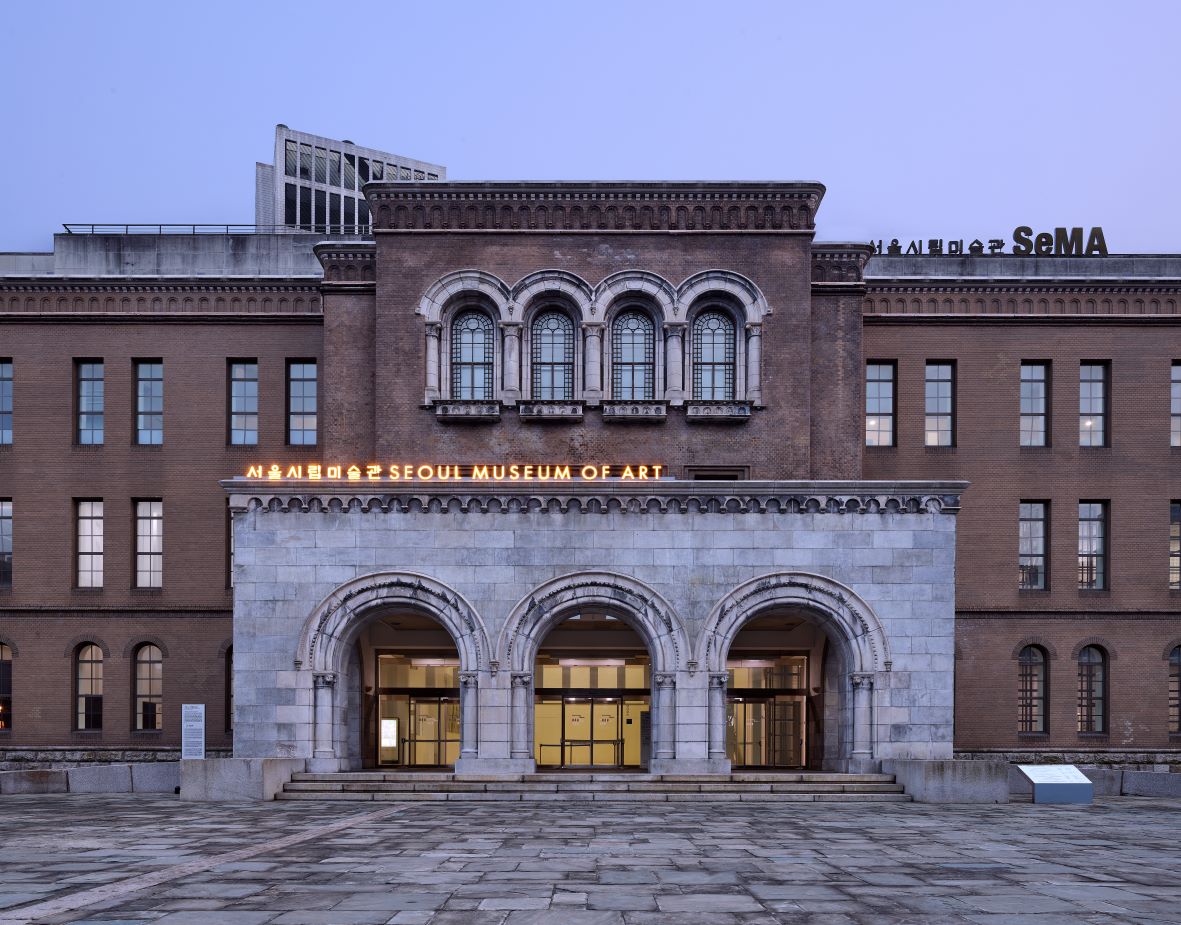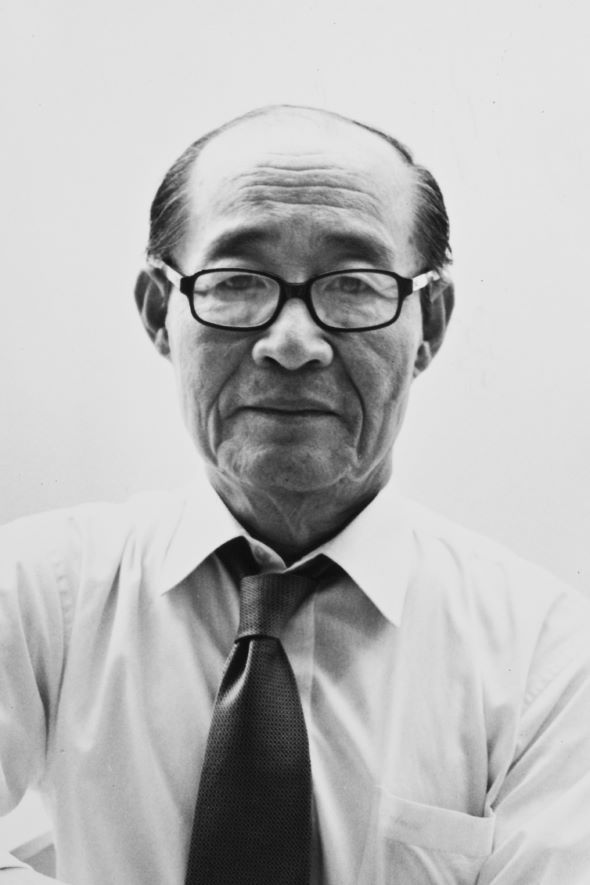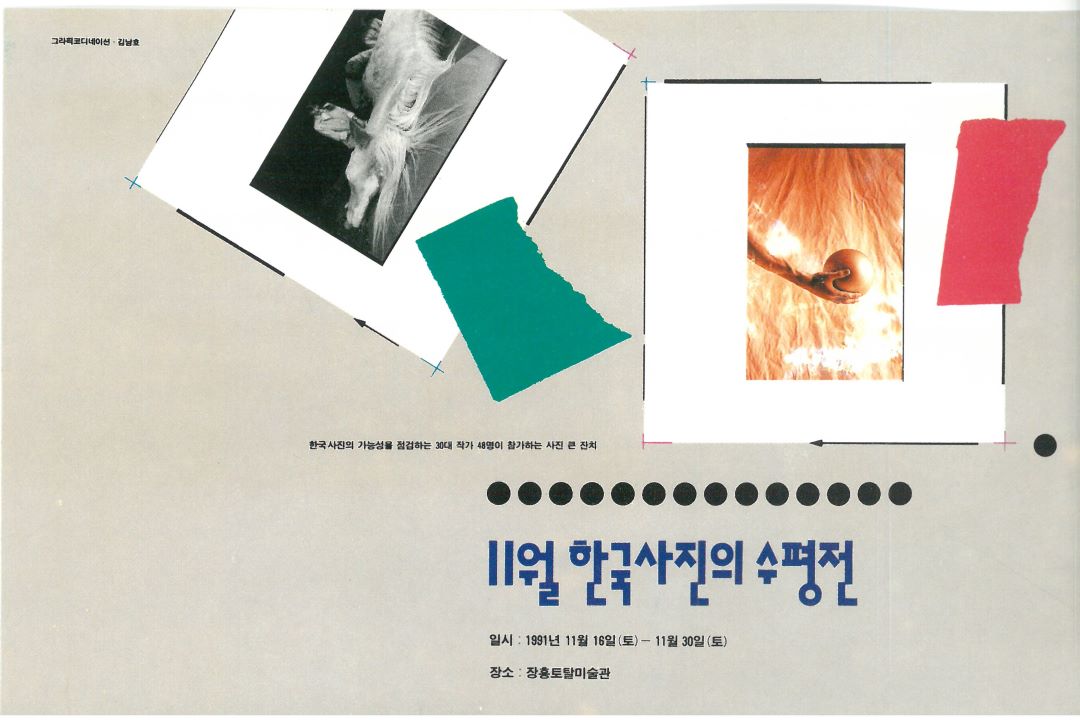
Seoul Museum of Art (SeMA) ⓒ Kim YongKwan
Seoul Museum of Art (SeMA)
* Source: Multilingual Glossary of Korean Art. Korea Arts Management Service
Related
-

Seoul Mediacity Biennale
Seoul Mediacity Biennale is an exhibition hosted by the Seoul Museum of Art every two years from 2000. It aims to provide a new turning point in art and technology and to explore relationships between media art and the city by paying particular attention to digital media. The official name was Media_City Seoul at the opening of 2000. The name implies the future image of Seoul, which operates based on the premise that media, a means of communication, is essential in high-tech urban lives and that a city can exist and develop through the media as it also exists and develops. It was later renamed several times to further highlight the nature of the exhibition, but the name Seoul Mediacity Biennale was finalized in 2018. Previous artistic directors include Song Misook for the first, Rhee Wonil for the second and fourth, Yoon Jinsup for the third, and Yung Ma from London has been appointed for the 11th, which is scheduled to be held in 2021.
-

Yu Jun-sang
Yu Jun-sang (1932-2018) was a founding member of the Korean Art Critics Association [Hanguk misul pyeongnonga hyeophoe] along with Lee Yil and Oh Kwang-su. He has worked in various fields as a curator, educator, and art museum director. After graduating from the College of Commerce at Seoul National University in 1954, Yu moved to France in 1956 and pursued a Ph.D. in business administration at the University of Paris (Université de Paris) before dropping out. He studied painting at the Académie de la Grande Chaumière and audited the history of Western modern and contemporary art at the Liberal Arts Department of the University of Paris. After returning to Korea, he taught art theory courses at Hongik University, Seorabeol University of Arts, and Ewha Womans University. As an art critic, he served as president of the Korean Art Critics Association from 1972 to 1982. Yu participated in the selection of artists representing Korea for the exhibition of Contemporary Korean Painting held at The National Museum of Modern Art, Tokyo in 1968, and Korean Contemporary Art: 1957–1972 held at the Myeong-dong Gallery in 1973. He was head of the curatorial department at the National Museum of Contemporary Art, Korea (now MMCA) from 1986 to 1992 and as director of the Seoul Museum of Art from 1999 to 2002. He also laid the foundation for Korean art criticism by assuming charge of editing the magazines Hyeondae Misul of Myeong-dong Gallery in 1974 and Sun misul of Sun Gallery from 1979 through 1983. His publications can be divided into those that attempt a conceptual or aesthetic approach and those that discuss the works of other artists. The former include Korean Contemporary Art 12: Stylization of Korean Sentiments (Hanguk Ilbo newspaper company, 1977, 82–108) and “Prospects and Possibilities for Computer Art: A Focus on Patterns of Perception and Artistry” in Beyond Modernism (Yesul jisik, 1989, 298–315). Among the artists that Yu addressed with interest were Rhee Seundja, Kwon Jinkyu, Quac Insik, Moon Shin, Nam Kwan, Kwon Okyon, Kim Whanki, Chang Dookun, Lee Seduk, Han Mook, Moon Hakjin, Park Hangsup, Choi Youngrim, and Kim Sechoong. Yu was particularly interested in the generation of artists who had received art training before Korea’s liberation from Japan as well as those who had lived in France.
Find More
-

Seoul in Media
Seoul in Media was a special exhibition series held three times by the Seoul Museum of Art from 1996 through 1999 at the Memorial Hall for the 600th Anniversary of the Capital Seoul (present-day Gyeonghuigung Palace site). The first edition Seoul in Media: 1988–2002, which was held from October 7 through 20, 1996, was intended to reflect and discover new images of Seoul during the period from the Seoul Olympics to the 2002 Korea-Japan World Cup. A total of twenty-seven Korean artists, including Hong Suncheol, Kim Jangsup, and Lee Kangwoo, exhibited their works in various forms such as video, photography, animation, and installation works. Some of these works were screened on more than a dozen of large electronic news boards throughout Seoul. From October 16 through November 4, 1998, Seoul in Media: Food, Clothing, Shelter was held. The invited curator Lee Youngchul organized an exhibition that allowed open interpretations by using an unrestrained space design. Lee’s curation was favorably received. The four teams and fifty-four artists who gathered under the theme of “everydayness” used a wide variety of media and included many emerging artists, such as Kim Sora, Yang Haegue, Ham Yangah, Lim Minouk, and Jeong Hyeseung. The 1999 exhibition Seoul in Media: Lumia of Century was held from October 15 through November 3. With thirty-three artists participating, this edition consisted exclusively of media art based on the theme of “light,” including video, computer, photography, laser, and hologram. The exhibition space was designed by Min Sohn-joo, who was also a participating artist, and she created a space where visitors could interact with the displayed works. The Seoul in Media exhibition series in the second half of the 1990s exerted influence upon changes in the Korean art scene by providing a model for exhibition planning and curatorial rules, raising interest in media art, and serving as a platform for emerging artists. Since 2000, the Seoul in Media has been held every two years in the format of an expanded international biennale Media City Seoul (renamed Seoul Mediacity Biennale in 2014).
-

Horizon of Korean Photography
A three-part exhibition held in 1991, 1992, and 1994. The word “Horizon” in the title was used to suggest that all artists can equally claim the medium of photography as their own, and participate free from all hierarchical structures. The first exhibition entitled November Horizon of Korean Photography was held from November 16 to 30, 1992 at the Total Gallery in Jangheung. The second exhibition lasted from November 28 to December 7 1992 and was held at the Seoul Museum of Art under the title November Horizon of Korean Photography: The Eye of Asia. The third exhibition, Horizon of Korean Photography, ’94: The Eye of the World, was held from August 17 to 23, 1994 at the Gongpyeong Art Center. The first exhibition featured 48 young artists who were all born around 1960. The second and third exhibitions featured 59 artists each, including both Korean and overseas photographers. Kim Seung-gon, who planned the exhibition, stated the purpose of the exhibition in the preface. For him, the exhibition was meant to recognize changes in artistic sensibility and the value system common to the new generation from the 1980s. In addition, it was designed to examine Korean art and to expand the context of contemporary art. The exhibition featured not only photography, but a wide manner of expressive artwork including painting, sculpture, and installations. It also provided a useful venue for critical discourse on contemporary issues of photography for artists and critics from Asia and Europe.






